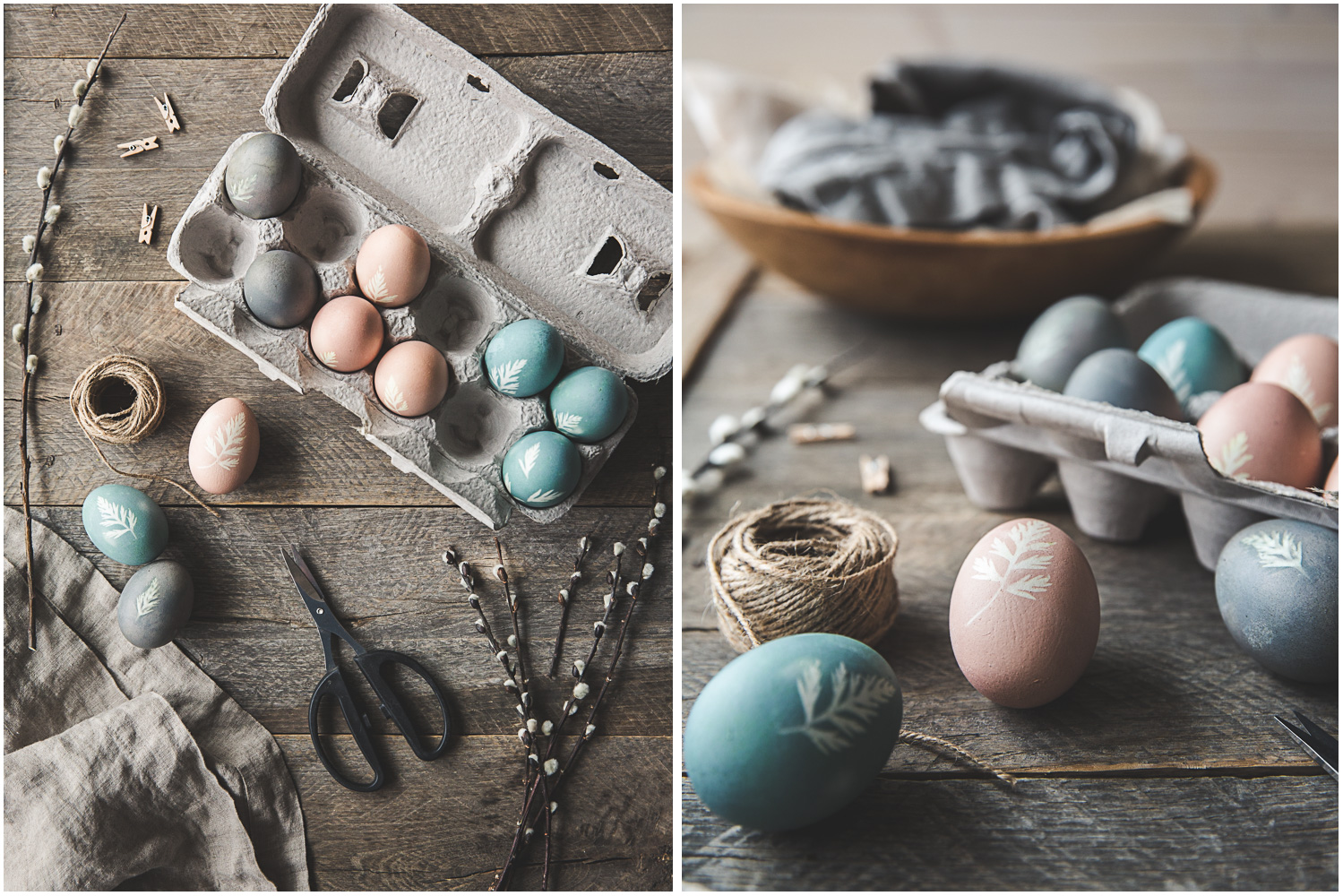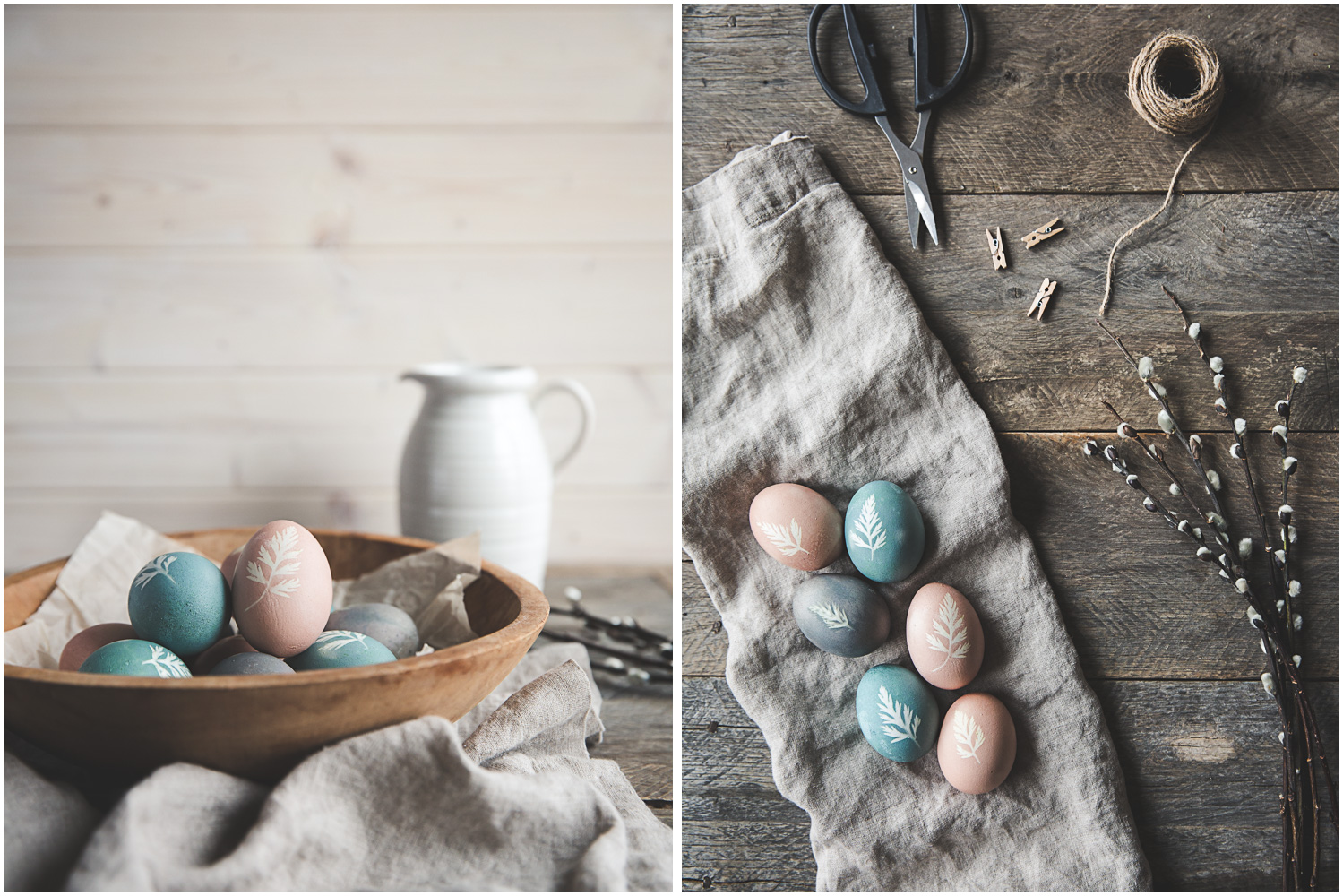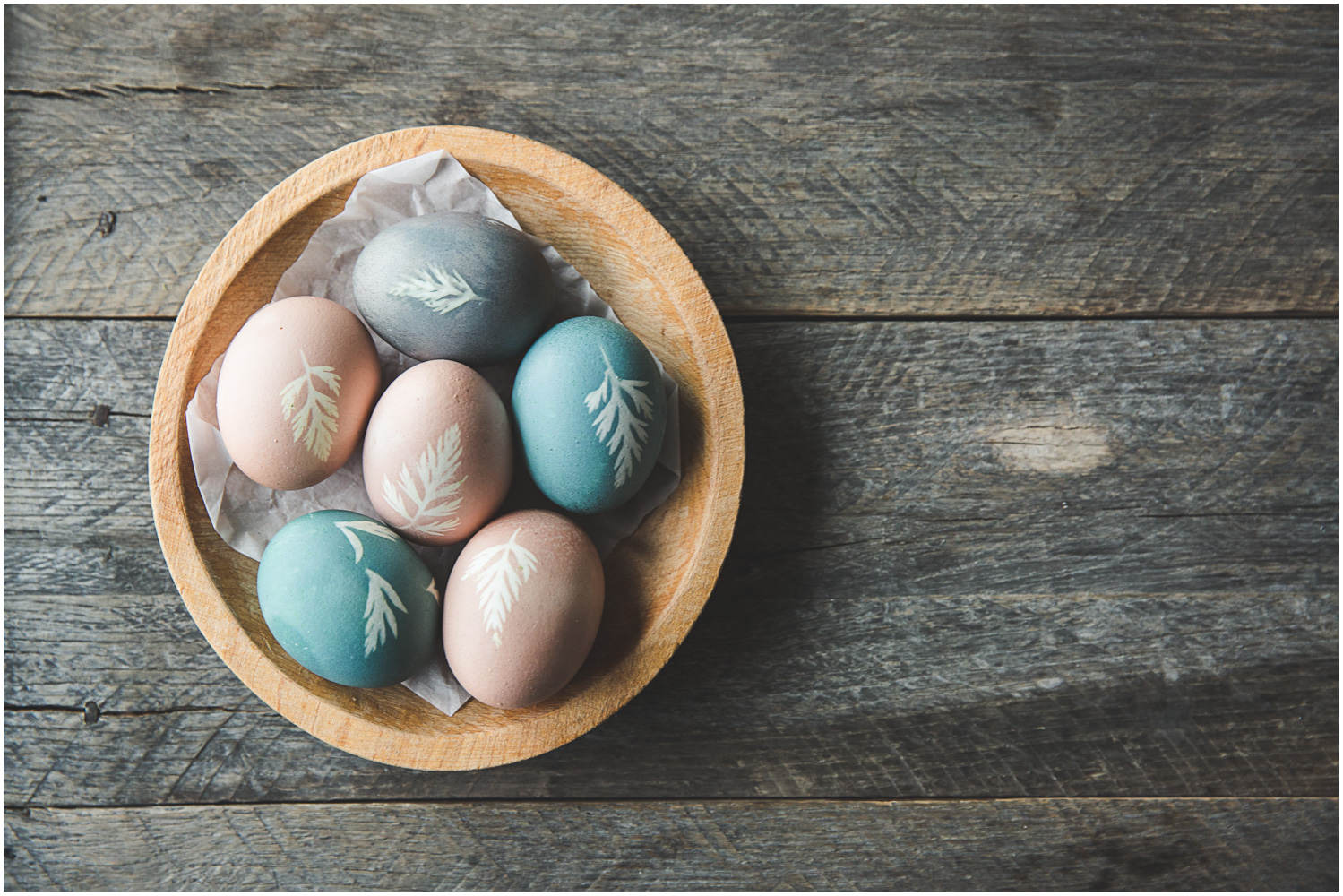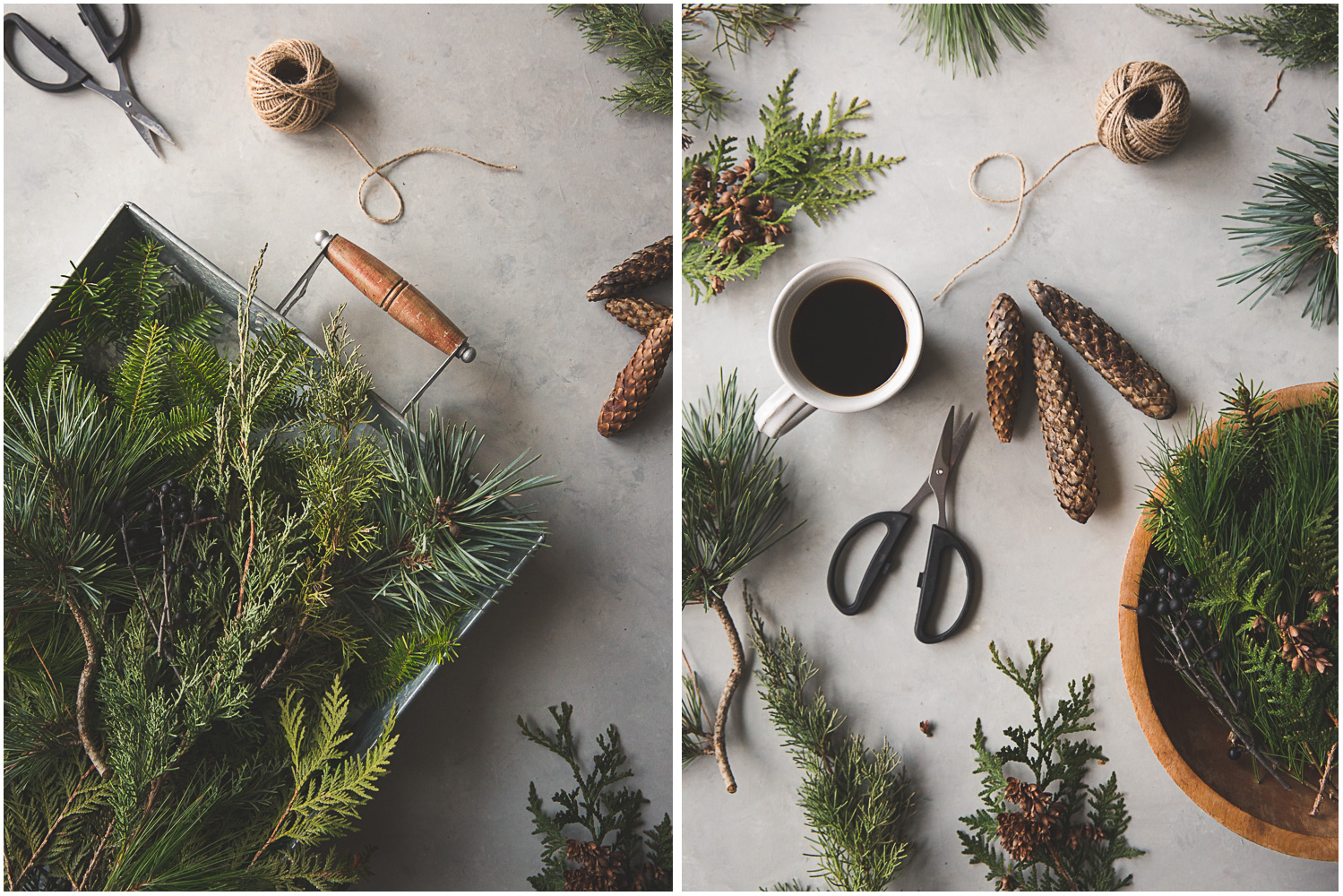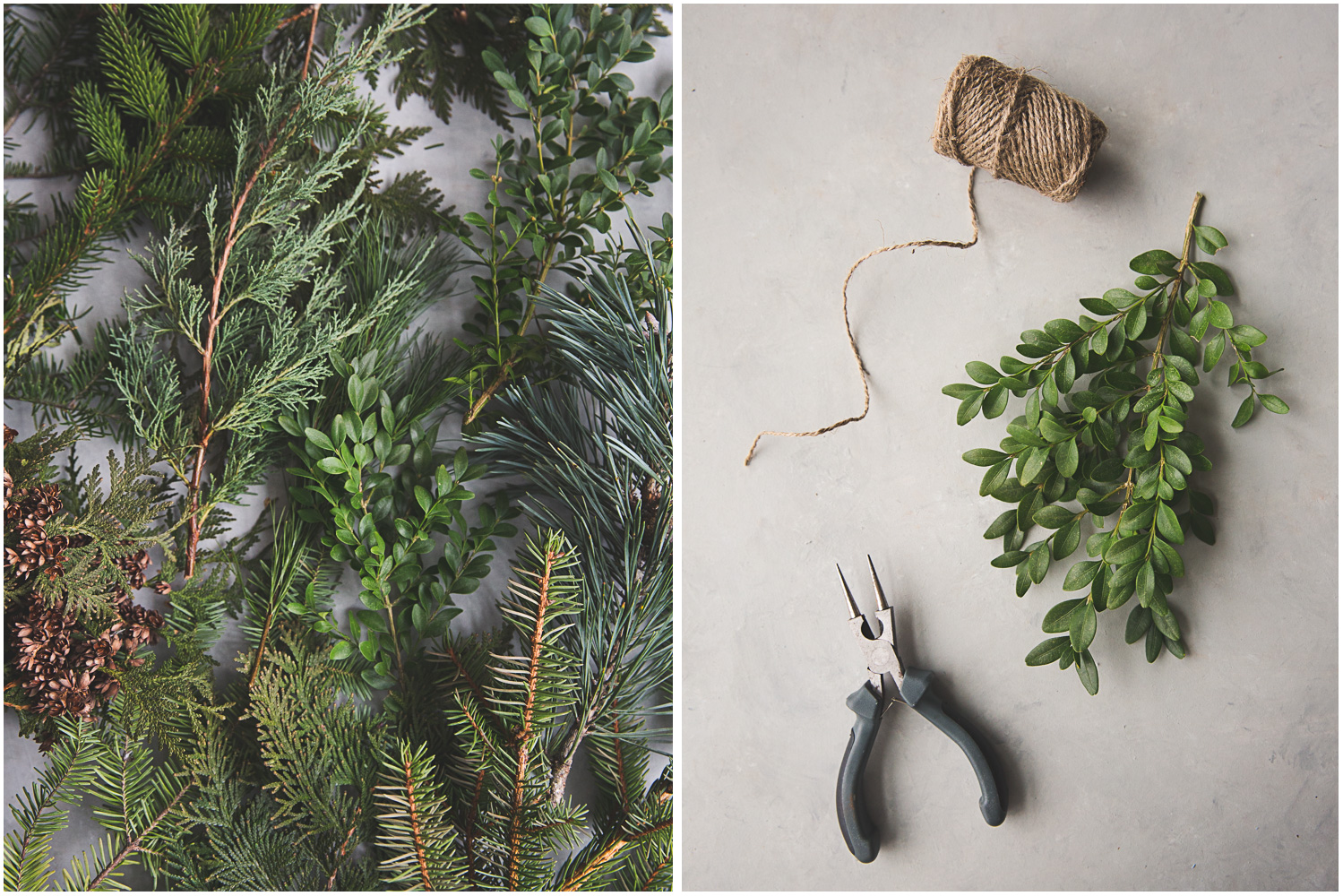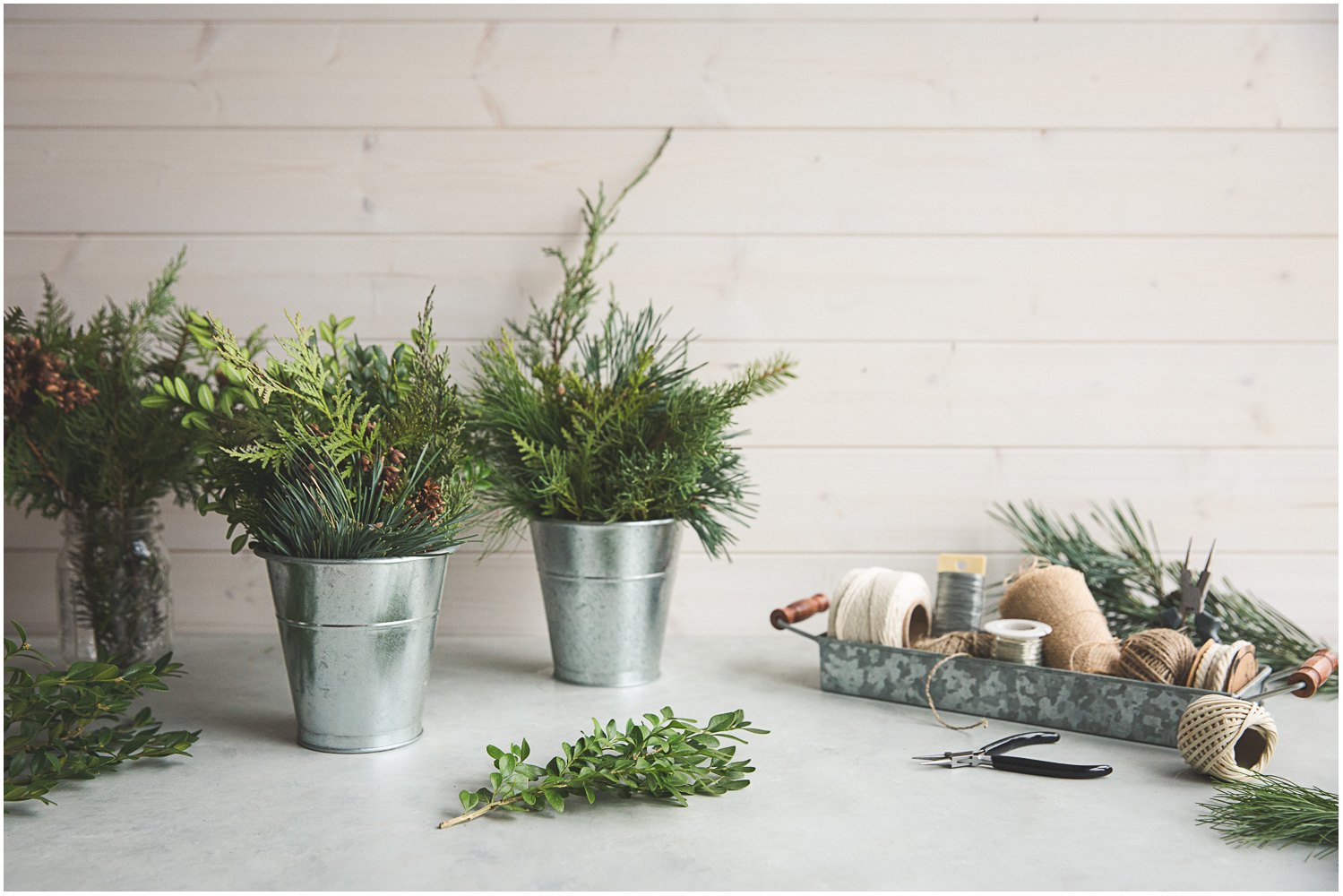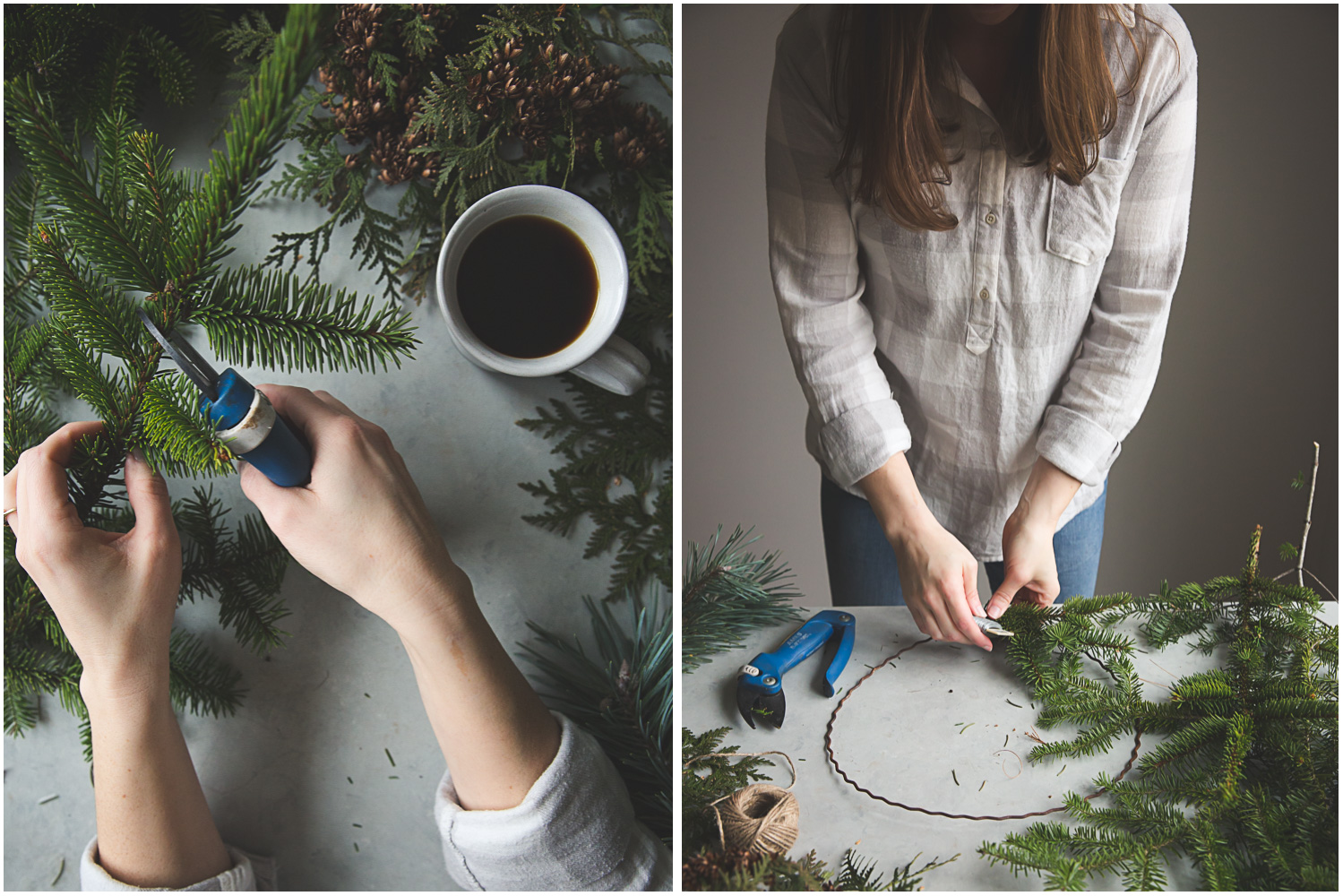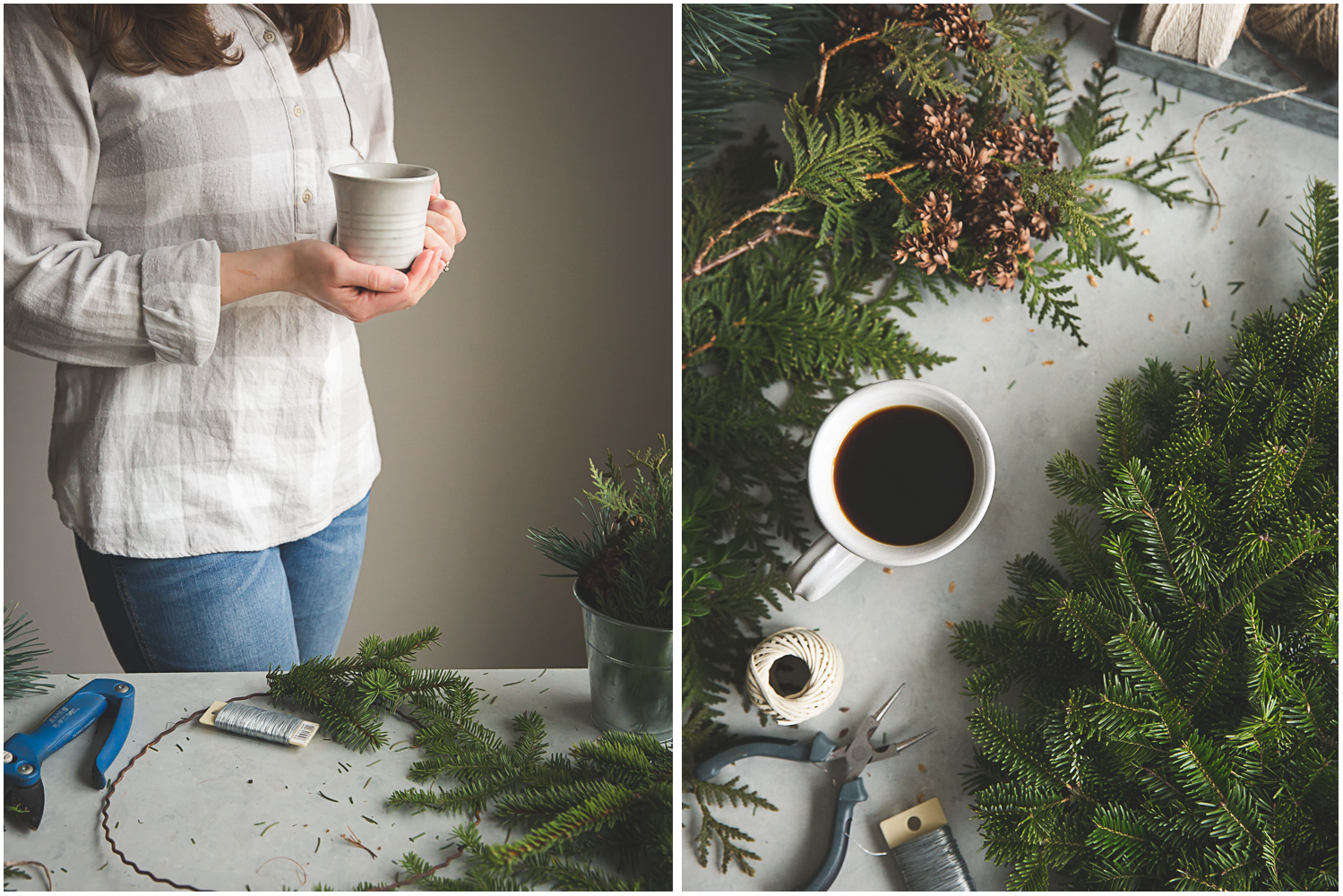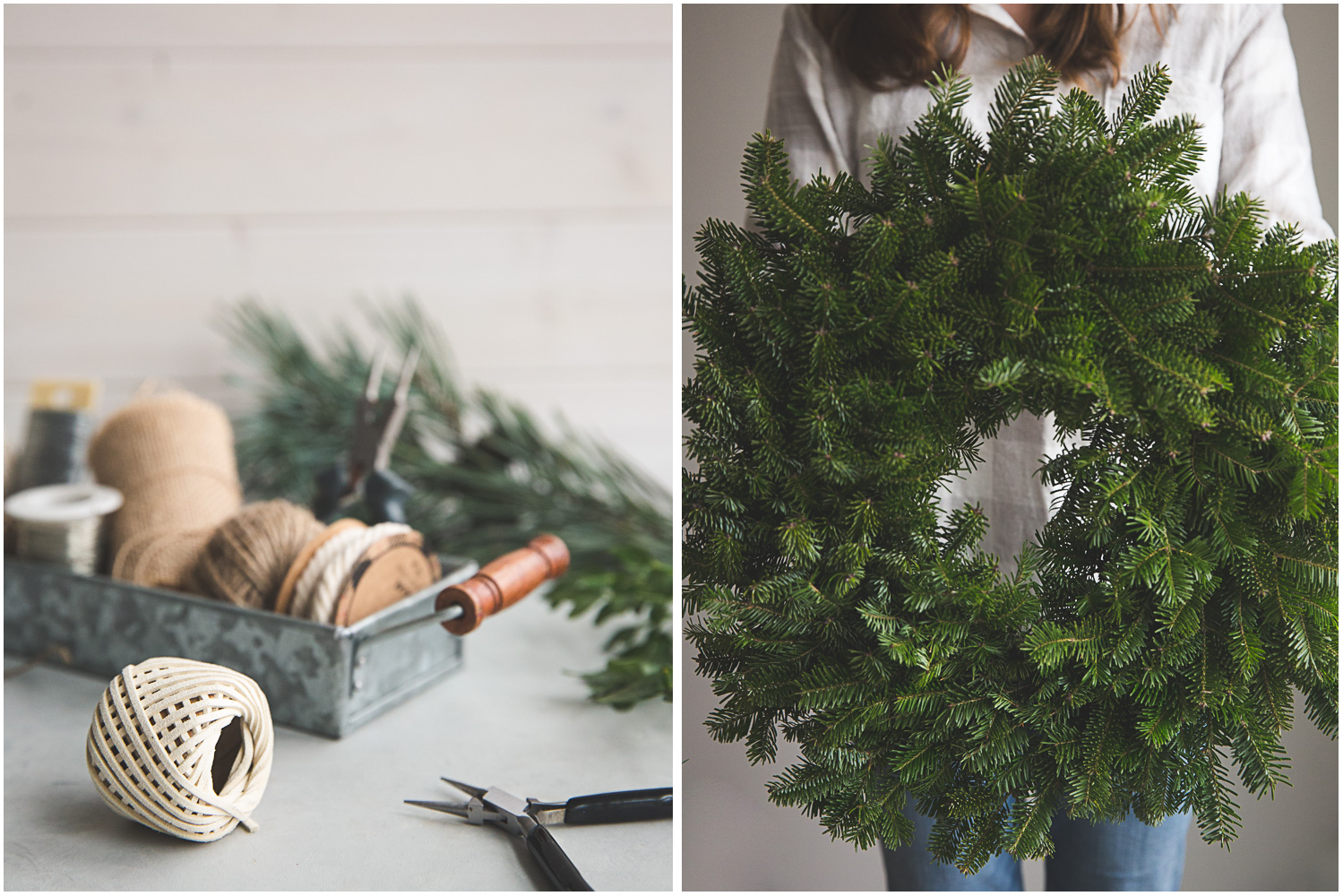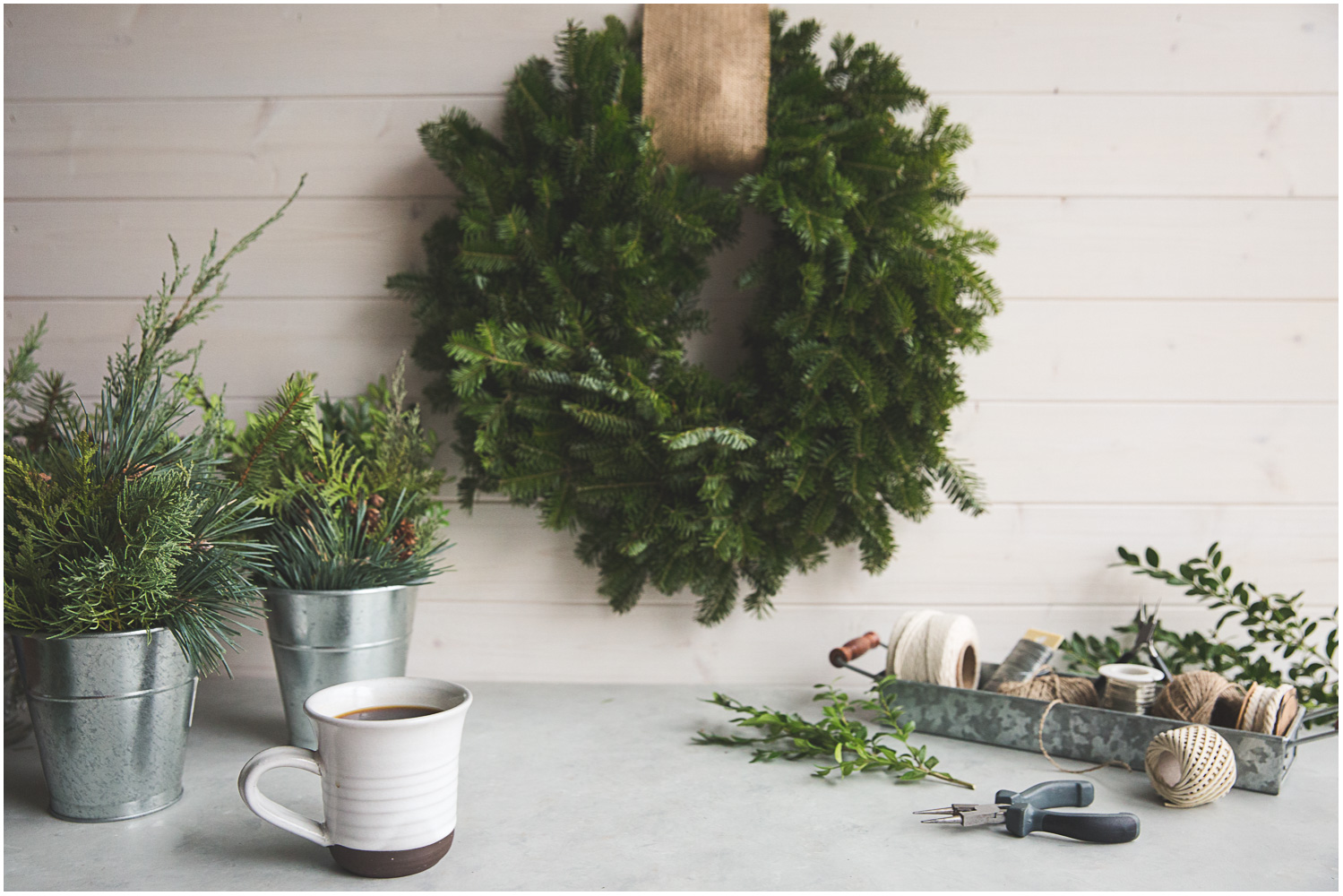Method:
For each of your dye baths, you're going to simmer the dye materials for an hour before adding your eggs. This is a stinky business, but worth it. Since I was only putting 4 eggs into each dye bath, I used 6 cups of water in 3 separate pots and added 1/2 of a chopped up red cabbage to one, avocado stone, cut in half, and skins to another, and 1/4 c. frozen blueberries to another. Bring the pots to a boil, then cover, and let simmer for an hour. While those are boiling, prep your eggs. It's not as hard as it may seem at first glance. Place a leaf smooth side down on the egg and gently wrap a section of hose around the egg. I recommend covering the whole egg - I didn't on some of mine and you can tell when they are done. Tie the hose in a knot secure enough to hold the plant in place, but not so tight you crack the egg. When the dyes are done simmering, remove the fruits and veggies from the pots, discard, add a splash of vinegar, and very carefully place your eggs in. Bring to boil, then turn off the heat, and let sit for about 15 min. This will hard cook your eggs. Now it's up to you how long you want to leave them in the dye bath. After an hour, they will have very light color. I left mine in the dye bath in the refrigerator overnight. I did gently place them into sealable plastic tubs for this, as I needed the pots and they wouldn't all fit in the fridge anyway. The next morning, I took them out of the dye bath, snipped off the hose, and voila!









